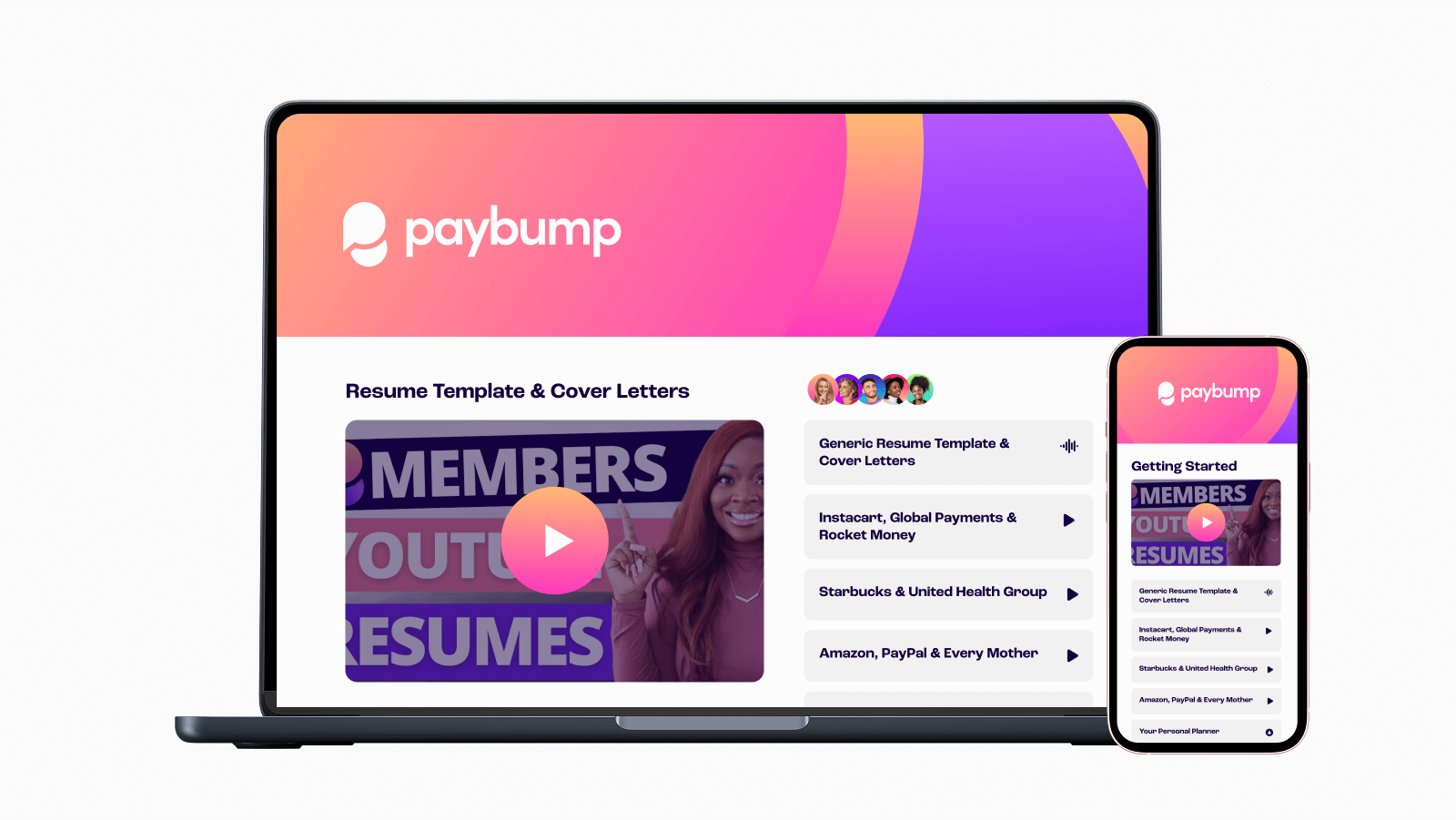
4 Easy Remote Jobs With Training Provided: Get Paid to Learn
Remote jobs with training are a lifeline for beginners, career changers, and anyone hoping to earn from home—without needing years of experience.
Whether you're looking for a side hustle, your first real work from home job, or a full-time remote career, there are companies actively hiring and offering paid (and sometimes unpaid) training to help you succeed.
This guide breaks down what kinds of training are available, which industries offer the most support, examples of job opportunities and how to position yourself to get hired—even if you’re starting from scratch.
What Are Remote Jobs with Training?
Remote jobs “with training” include any role that provides structured learning so you can perform the job effectively. That might be onboarding (company policies and tools), certification prep (licenses for insurance or healthcare), or upskilling modules that deepen your skills over time.
Training can be synchronous (live Zooms), asynchronous (self-paced videos and quizzes), or blended. Some employers pay you during training, while others offer unpaid programs or stipends—more on how to evaluate that below.
Paid vs. unpaid training
In the U.S., non-exempt employees must generally be paid for mandatory job-related training; the Department of Labor’s Fact Sheet #22 explains the limited conditions when training can be unpaid (voluntary, outside work hours, not job-related, and no productive work).
If training is required for your job and scheduled during work hours, it should be paid. Always read the fine print and ask recruiters to confirm in writing if training is compensated, how long it lasts, and whether you’re considered an employee during that period.
You should also confirm whether you’re expected to attend a full-time or part time training program (usually that will correlate with a full time or part time role), and whether there are fixed hours or flexible work opportunities for undertaking your training. For example, can you complete training at the weekends or during evenings to fit around your work life balance. Again, this may go hand-in-hand with specific weekend-only jobs or those working night shift remote roles.
Why These Roles Are Ideal for Beginners
Entry-level remote jobs with training are built for ramp-up. Employers expect to teach you the scripts, tools (often integrating AI into everyday customer service tasks) and workflows, so you’re not penalized for lacking direct experience. This is especially common in support roles where customer service experience isn’t always a pre-requisite.

Paid training removes the upfront cost of learning, the schedules are often flexible, and you can leverage the learn-as-you-earn model to test an industry before committing long term.
Many companies also treat training as a probation period that converts into higher pay or bonuses after 60–90 days—especially true in customer support, insurance claims, and health-support roles.
Industries That Offer Remote Jobs with Training
💬 Customer service and call centers
Major employers and BPOs hire nationwide for chat, email, and phone support—and many advertise paid virtual training. Concentrix and Conduent, for example, list remote healthcare or government support roles that include paid training and clear paths to advance.
🏦 Insurance and finance
Remote insurance jobs with paid training are amongst the most common opportunities to find. Carriers like Allstate offer on-the-job training for claims and customer roles; some even cover licensing costs. Expect structured schedules (often daytime for training) and company-provided equipment.
👩⚕️ Healthcare support and medical billing
Remote medical billing, coding, and patient support frequently come with formal onboarding and systems training—because accuracy is regulated and measurable. Job boards show thousands of “paid training” postings in this category.
📚 Online education (tutoring, ESL)
Many platforms train tutors on curriculum and tools; some don’t require a degree and offer evening hours that fit around school or caregiving.
📲 Tech and coding bootcamps
While not every bootcamp pays trainees, tech companies like Amazon run paid apprenticeships and upskilling programs that blend classroom learning with on-the-job rotations—great for career changers.
💼 Sales and lead generation
Entry-level SDR/BDR roles are built around scripts, systems, and coaching. Look for employers that advertise “structured ramp” and weekly call-review feedback.
The 4 Best Remote Jobs That Offer Training (with Real Companies Hiring)
Yes, these are real roles hiring right now. Pay ranges vary by state and experience, but the examples below show how paid training looks in practice when working remotely.
1) Complaints Analyst
📚 Training provided: Most companies run policy/compliance training and product deep-dives, plus hands-on case handling with QA feedback.
🙋♀️ Skills needed: Clear writing, customer empathy, data hygiene, and comfort with regulated workflows.
💰 Typical pay: At Coinbase, postings for complaints or support analyst roles show hourly ranges reported by employees between $35 and $61 per hour, depending on level.
🏢 Companies hiring: Coinbase regularly posts complaints handling roles (including senior tiers for those looking for high paying jobs with paid training provided).
🌟 Perks worth noting: Tech-company benefits often include 401(k), medical, and equity; confirm specifics in each posting.
2) People Operations Associate Generalist (HR)
📚 Training provided: Digital HRIS (e.g., Workday), ticketing systems (Jira/ServiceNow), and knowledge-base navigation—expect a structured ramp with SOPs and CRM workflows.
🙋♀️ Skills needed: Organization, discrete handling of sensitive data, stakeholder comms.
💰 Typical pay: Coinbase lists a pay range of $87,550–$103,000 for a remote People Operations Associate Generalist in the U.S. (base salary; bonus and equity typically additional).
🏢 Companies hiring: Coinbase and other distributed-first tech firms. Third-party listings mirror similar ranges.
🌟 Perks worth noting: Enterprise HR roles often come with relocation-free career paths—great if you want remote stability.
3) Customer Support Associate
📚 Training provided: Two weeks (sometimes more) of virtual onboarding, product walkthroughs, systems training, and live call/chat simulations.
🙋♀️ Skills needed: Communication, time management, knowledge-base usage.
💰 Typical pay: Squarespace has published $18.50/hour for some remote Customer Support Associate roles, with geography and experience affecting the rate.
🏢 Companies hiring: Squarespace, plus many SaaS brands that invest heavily in customer success.
🌟 Perks worth noting: Squarespace highlights generous leave policies, including parental leave. Check the specific posting for current benefits.
4) Trust & Safety Specialist — Law Enforcement Response
📚 Training provided: Two-week virtual training with scenario practice, legal-process playbooks, and secure tooling.
🙋♀️ Skills needed: Interest in policy and internet safety; comfort reviewing sensitive content; process discipline.
💰 Typical pay: Instacart listings and partner job boards show a $47,000–$63,000 salary range for U.S. remote roles.
🏢 Companies hiring: Instacart and other platforms with large user communities.
🌟 Perks worth noting: You don’t need a law degree; training covers the essentials.
Other HOT Remote Roles with Training
- Remote Customer Service Jobs with Training: Abundant, entry-friendly, and often with paid training. The BLS reports national mean pay around the low-$20s per hour, with higher wages in states like DC and WA.
- Remote Data Entry Jobs with Training: Fewer roles than in the past (thanks AI and automation!), but still common in healthcare and finance back offices; 2024 BLS data shows mean hourly pay just over $20.
- Remote Insurance Claims Assistant. Insurers like Allstate advertise paid training and equipment for remote claims intake and support.
- Remote Coding Jobs with Training: Companies and MSPs train on ticketing systems and troubleshooting; Amazon and others run apprenticeship programs that include paid training segments.
- Online Tutor or ESL Teacher: Platforms provide curriculum and onboarding, with many evening shifts to match learner time zones.
What to Expect from Remote Job Training
Remote jobs with on the job training tend to see learning and development programs delivered in line with a number of expectations:
- Formats: Expect a mix of self-paced modules, instructor-led Zooms, sandbox practice, and buddy shadowing. Some teams include mini-assessments or “nested live” shifts, for example, customer service remote jobs with training might have you handle low-risk tickets with a coach monitoring through screen mirroring.
- Timeframes: Anywhere from two days to six weeks. Customer support often ramps in 1–3 weeks; healthcare coding or insurance licensing may take longer.
- Access requirements: Reliable internet, a quiet space, and sometimes a VPN, company laptop, and specific browsers or password managers. Companies that provide equipment will ship it to you before day one.
- How to get the most out of training: Block time for review, take diligent notes in your own words, create a personal glossary for acronyms, and practice with dummy data. If there’s a knowledge-base, bookmark high-impact articles and build a “first-30-days” checklist to track confidence.
Paid vs. Unpaid Training: What’s the Difference?
👩⚖️Know your rights
In the U.S., non-exempt employees must be paid for training unless all four FLSA criteria are met: it’s outside regular hours, attendance is voluntary, the content isn’t job-related, and no productive work occurs. If any one of those is false, the time is compensable
🚩Spot red flags
Be careful with companies that charge a fee for mandatory training, require expensive equipment purchases up front, or are vague about compensation while promising “six figures ASAP.” Cross-check listings on vetted boards like FlexJobs or Virtual Vocations to reduce risk.
Better still, get Paybump’s exclusive weekly round-up email that shares the hottest job opportunities of the week - you know these are 100% legit as we’ve done the background checks for you!
You can also get the exact resume templates from the Paybump portal! 🤫

✅ Why some unpaid programs can still be legit
Short internships, volunteer-style apprenticeships, or external bootcamps can be worthwhile if:
(a) they’re optional;
(b) they’re genuinely educational, and
(c) they lead to recognized credentials or job placement help.
Salary Expectations: Before vs. After Training
Do wages increase post-training?
Many roles offer a training wage that steps up after you pass benchmarks (quality scores, handle time, or licensing exams). In claims or customer support, it’s common to see a few dollars per hour added after probation. Allstate, for example, advertises paid training with a fixed schedule and then standard production schedules afterward—proof that training is a real, compensated phase.
Typical starting rates
Entry-level customer service representative roles frequently start between $17–$22/hour, depending on state and employer; BLS data and live postings support that range. Data entry is often a bit lower; specialized support and trust-and-safety can be higher.
How to negotiate after training
Track your wins from week one (QA scores, CSAT, tickets closed, projects led). When you graduate training, ask for a calibration chat. Use market data—BLS wage tables and real postings—to support a modest bump, or ask for an earlier performance review.
Real-world examples:
- Squarespace publicly lists $18.50/hour for some remote Customer Support Associate roles. The range may vary by location.
- Instacart’s Trust & Safety Specialist (Law Enforcement Response) shows $47K–$63K; training precedes full production.
- Coinbase’s People Ops Associate Generalist lists $87.6K–$103K plus equity/bonus; most candidates complete HRIS and workflow training first.
Tips for Applying to Remote Jobs with Training
- Lead with transferable skills: Communication, reliability, typing speed, basic spreadsheets, written communication skills and ticketing tools translate across industries.
- Use the magic phrases: Phrases like “trainable,” “eager to learn,” and “adapt quickly to new systems” help recruiters see fit for training cohorts. Read the full job description and get in as many HOT words as possible.
- Show rapid learning with proof: Add mini-stories: “Mastered Zendesk macros in week one; improved first-response time by 18%.”
- Tailor your resume even without experience: Mirror the job description’s language and move relevant projects to the top. Don’t worry if you don’t have a high school diploma or GED - use relevant work experience and highlight transferable skills like problem solving or being detail oriented. Two clean pages beat one cluttered page—especially for ATS scanning.
- Stack low-cost certifications: HubSpot, Google’s Digital Garage, Microsoft, and Coursera offer free or low-cost badges that prove momentum. Link them on your resume and LinkedIn.
How to Stand Out During Training
- Be reliable: Join early, test your mic, and submit assignments on time. In virtual training, being punctual is your first impression.
- Ask sharp questions: Focus on the process: “What does ‘done’ look like?” “Where is the source of truth?” “What’s our escalation path?”
- Offer help: Volunteer to summarize a module for the group or draft a quick cheat-sheet; teaching others cements your learning.
- Treat training like a trial: Assume hiring managers are deciding who gets prime shifts, projects, or conversion. Aim for top-quartile QA scores.
- Show soft skills: Pair curiosity with composure. Trainers remember the person who calms a frazzled cohortmate and keeps momentum.
⚡️ Pro tip: Many companies promote top trainees into quality assurance, peer-coach, or team-lead tracks within 3–9 months. If that’s your goal, ask your trainer for the rubric used to make those decisions.
Red Flags to Watch Out For in Remote Job Training 👀🚩
- Mandatory paid-upfront “training.” If the company demands money to start work, pause. Ask for a written offer and a W-2/contractor agreement.
- Vague training details. Legit listings specify schedule, duration, and whether training is paid.
- “Earn while you learn” schemes. Multi-level marketing or crypto “opportunities” often hide the ball. Verify the employer and read independent reviews.
- No company domain email or website. Search the company on reputable job boards or use curated boards with anti-scam screening.
Balancing Remote Training with Daily Life
⏰ Plan around fixed times
Build a schedule that accounts for child care, meals, and a tech check 15 minutes before training starts. If your program spans time zones, ask for recordings.
🤫 Minimize distractions
Set up your optimal work environment - close tabs, silence notifications, and use a second device for notes so your training window stays focused.
💬 Get community support
Join online groups where trainees compare notes and share templates; niche communities and curated job boards can surface trustworthy leads faster than generic social media feeds.
🤰 Time management for caregivers
Batch chores, prep meals on weekends, and claim five-minute “micro-breaks” during module transitions to check-in on little ones and reset.

Where to Find Remote Jobs with Paid Training (Fast)
Skip the sketchy listings. Start with curated boards and employers that publish pay ranges and training details up front:
- ZipRecruiter — “Remote Training Provided.” A live search category that aggregates thousands of postings across industries and states. Use filters for “entry level” and “remote.”
- FlexJobs. Vetted, scam-free listings with categories for “no experience” and “on-the-job training.” The blog regularly features roundups of beginner-friendly roles.
- Virtual Vocations. Longtime remote-only board with reports on companies hiring fully remote and benefits-rich roles—useful for building a target list.
Equipment & Setup: What Most Training Programs Expect
- Computer: A modern laptop or desktop that can run a recent browser plus a VPN client.
- Internet: 25 Mbps down/5 up is a common baseline; wired ethernet beats Wi-Fi for stability.
- Peripherals: Webcam, USB headset, and sometimes a second monitor (many companies ship equipment; Allstate even notes specific gear in some postings).
- Security: Willingness to use a company password manager, MFA, and device compliance checks.
Mini Application Checklist (Copy/Paste)
- One-page resume tailored to the job’s keywords (tools, shift, soft skills).
- Short cover note that proves you read the posting: mention the training schedule and confirm your availability.
- 2–3 bullet “learning wins,” e.g., “Completed Google Data Analytics course; built a ticket-tagging dashboard,” or “Self-taught Excel VLOOKUP/XLOOKUP in a weekend.”
- Typing test screenshot (e.g., 50+ WPM) and internet speed test link to remove doubt.
- Time-zone note and flexibility for evening training if needed.
⚡ ️Bonus tip: keep a job tracker—a spreadsheet with the role, date applied, training details, and follow-ups—so you never miss a cohort start or let a lead go cold.

Quick Email Template to Ask About Training
“Hi [Recruiter Name], I’m excited about the [Role] opening. Could you confirm the training format (live vs. self-paced), length, schedule/time zone, whether it’s paid, and any equipment requirements? I’m available [times], have a wired connection, and love learning new systems. Thanks for your time!”
Career Ladders from the 4 Featured Roles
- Complaints Analyst → Senior Analyst → Quality & Insights → Compliance Ops → Risk/Policy.
- People Ops Associate → HR Generalist II → People Partner → HRBP → People Ops Manager.
- Customer Support Associate → Senior Agent → QA/Trainer → Team Lead → Customer Success.
- Trust & Safety Specialist → Senior T&S → Policy Specialist → T&S Program Manager.
Launch Your Remote Career With Training - and a Paycheck
If you’re starting from zero, training-inclusive remote jobs are the fastest way to build skills, earn immediately, and discover what you actually enjoy. Target beginner-friendly industries, apply with a crisp, tailored resume, and treat training like an extended interview.
Want vetted leads, templates, and weekly alerts?
Explore Paybump’s curated job listings and toolkits, then join our newsletter for member-only opportunities that hit your inbox first.
FAQs
What are the best remote jobs with training provided?
Customer service, data entry, tech support, online tutoring, and insurance roles are among the best for beginners. These often come with structured onboarding and paid training.
Can I get a remote job with training and no experience?
Yes, many companies offer training for remote positions that don’t require experience. Look for entry-level listings that say “no experience necessary” or “training provided.”
Do companies pay you during remote job training?
Many do. Companies like Amazon, Conduent, and Allstate offer paid training. Always check the job listing or ask directly.
How long does remote job training usually take?
It varies by role. Training can last from a few days to several weeks depending on the complexity of the job and the company’s processes.
Is remote job training done online or in person?
Almost always online—via live sessions, modules, or pre-recorded materials. Some roles may require occasional video calls or assessments.
How can I tell if a training opportunity is legit?
Avoid any job that asks for payment upfront. Look for real company websites, reviews on Glassdoor, and detailed onboarding information.
Are there remote jobs with training in the evening?
Yes, many remote jobs with evening training exist, especially roles supporting global customers or students in different time zones. Look for “flexible hours” or “evening shifts” in listings.
What kind of training is available for remote jobs in customer service?
Usually includes software tutorials, script reading, call simulations, compliance rules, and etiquette.
What should I include in my resume if I’m new but want a remote job with training?
Highlight soft skills, mention your eagerness to learn, and include any relevant certifications or transferable experience.
Can I move into a higher-paying role after training?
Absolutely. Many companies increase pay after probation or offer promotions to high-performing trainees.






